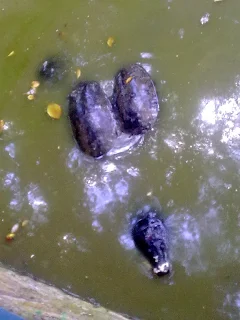Empal gentong is a spicy curry-like beef soup originated from Cirebon, West Java. This soup is similar to gulai that usually cooked with firewood stove in gentong (Javanese for: clay pot). The ingredients are parts of beef meat, intestine, tripes, lungs, etc. cooked in curry-like spices in coconut milk, kucai and sambal in the form of chilli powder. Empal gentong can be eaten with steamed rice, ketupat or lontong.
this is a kind of curried soup with beef. It’s cooked with coconut milk and usually served with rice or lontong (steamed rice in banana leaf). Usually will be served with a chili powder especially made for this dish. Mostly Empal Gentong is a mix of meat and innards/entrails so request meat only (daging saja) if you’re not keen on the latter.
Empal gentong originated from Battembat village, kecamatan Tengah Tani, Cirebon regency. You will find this dish served all over Cirebon with many in and near the train station.













